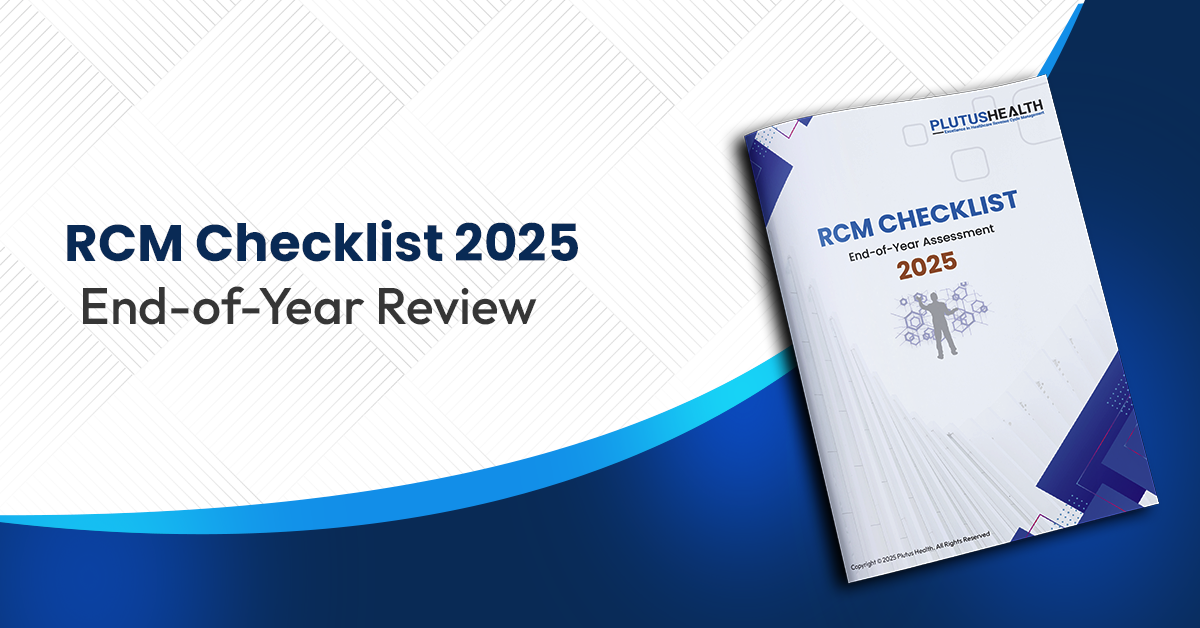Here's how to leverage auto posting in medical billing
Patient deductibles in the US have increased 150% between 2009 and 2018. While law makers have attempted to reduce health consumers’ burdens, their efforts have been ineffective. So, medical practices must engage with more complex accounting for patient balances. This complexity has forced billers to spend more time on each line-item of payments.
Payment posting is a critical part of revenue cycle management (RCM). This process is uniquely situated to catch any errors before sending a bill or statement to the Patient. However, rising patient responsibility is making payment posting increasingly time-consuming. To combat this time sink, practices are turning to auto posting.
Here’s how to leverage auto-posting in medical billing
What Auto Posting Offers
Auto-posting is the use of medical software to automatically post payments. This system avoids the burden of copying an insurer’s explanation of benefits (EOB) manually. Adopting auto-posting frees practices to spend more time focusing on patient well-being.
Some practices dislike sacrificing the flexibility of constant human oversight. However, auto-posting has advantages. Machine precision almost eliminates typos and mathematical errors. It can also post a payment quicker than the fastest staff member. A well-organized automatic system will display an income list, making finances clearer.
Train Specialized Billing Staff
Small practices frequently require their workers to perform duties outside of their expertise. Sometimes, even physicians must bill for services they deliver. This system is inefficient since these staff are slower and more prone to mistakes than full-time billers.
Automatic systems save enough time to circumvent this problem. Hire a small team whose primary task is to manage your practice’s revenue cycle and automate systems. These staff members will become far more efficient at this job than previous workers. Also, physicians who doubled as billers earlier will have more time to care for patients.
Incorporate Electronic Remittance Advice
Electronic remittance advice (ERA) is an electronic document that details an insurance payer’s coverage. Insurers will send healthcare Providers either a hard copy physical EOB or an (electronic) ERA. Physical EOBs require more work and time than their digital alternative. Automatic systems provide the most value if a significant chunk of your insurers are set-up for ERAs.
Many systems allow syncing payment posting with third-party accounting software. This synchronization gives practices a single platform to monitor income without requiring manual inputs. The more you use ERAs, the more services will automatically plug into this streamlined system.
Analyze for Improvements
The payment posting process is the best time to identify and correct underpayments. This step is where billing staff will have most of the necessary payment information. Unfortunately, sometimes automatic systems may fail to take full advantage of this crucial time. Experienced billers often recognize nuances that software fails to register.
To combat this problem, periodically review your system and the information that passes through it. Assign this task to a specific unit familiar with the ins and outs of payment posting errors. Record the problems you find and adjust your system accordingly.
Get the Best of Both Worlds
Practices may fear that their consistent use of automatic systems will miss out on potential gains and other errors. At the same time, it’s difficult to sacrifice the precision, speed, and laboralleviation that automation can offer.
To get the best of both worlds, hire a billing and coding service. Plutus Health has an expert team that excelsat quickly and accurately billing and posting payments. Yet we still maintain a high level of perception in identifying potential revenue sources. Contact our team today to learn how we'll improve your practice’s RCM.
Key Takeaways
1. Auto-posting offers a high-speed, accurate payment posting system.
2. Train specialized staff to use automatic systems.
3. Use ERAs to maintain a paper-free workflow and history.
4. Periodically analyze your systems to ensure a streamlined revenue cycle.
5. Hire a professional billing service to gain the best of both automatic and manual posting.
Liked the blog? Share it
FAQs


ABA providers are grappling with high staff turnover (up to 65%), rising burnout, administrative overload, and stagnant reimbursement rates. These challenges directly impact care continuity, clinical outcomes, and operational performance.


Operational inefficiency costs ABA teams up to 10 hours per staff member per week, contributing to burnout, denied claims, and longer accounts receivable (A/R) cycles. These inefficiencies ultimately result in reduced revenue and patient dissatisfaction.


Burnout leads to costly turnover, lower client retention, and decreased productivity. Recruiting and replacing a BCBA or RBT can cost up to $5,000 per hire, plus months of lost revenue and disruption to morale.


High-performing ABA organizations invest in clear career pathways for BCBAs and RBTs, align compensation with market benchmarks, and foster peer-led mentorship, flexible schedules, and wellness programs.


Automation tools like Plutus Health's Zeus streamline eligibility verification, denial management, and billing, reducing manual workloads by 5–10 hours weekly per clinician and improving clean claim rates by 95%.


Outsourcing revenue cycle management can improve collections, reduce denials by up to 30%, and free clinicians from billing-related admin tasks, resulting in better client care and financial outcomes.


One $200 million ABA network partnered with Plutus Health to automate eligibility and accounts receivable (A/R) processes. The result: $2M reduction in legacy A/R and a 97% Net Collection Rate.


By improving operational efficiency, investing in technology, and ensuring workforce stability, ABA leaders can align outcomes with reimbursement. Plutus Health supports this transition with scalable RCM and automation strategies.
FAQs


ABA therapy billing is the process of submitting claims to insurance or Medicaid for Applied Behavior Analysis services provided to individuals with autism or developmental disorders. It includes using correct CPT codes, proper documentation, and adherence to payer-specific policies.


Common CPT codes for ABA therapy in 2025 include:
- 97151 – Assessment and treatment planning
- 97153 – Direct therapy with the patient
- 97155 – Supervision and modification of behavior plan
- 97156 – Family adaptive training
- Always check with payers for any annual changes.


To bill Medicaid for ABA services, providers must ensure credentialing is complete, services are pre-authorized, and claims use the correct codes and modifiers. Medicaid requirements vary by state, so always follow state-specific billing rules.


Common ABA billing mistakes include:
- Incorrect or missing CPT codesplan
- Lack of documentation or treatment
- Uncredentialed providers rendering services
- Submitting duplicate or late claims


Without proper credentialing, providers can’t get reimbursed. Insurance and Medicaid require that BCBAs, RBTs, and organizations are credentialed and contracted. Delays in credentialing often cause revenue losses and claim rejections.
FAQs


CMS proposes a 2.4% increase in Medicare ASC payment rates, contingent on meeting ASCQR quality reporting requirements. Plutus Health helps ASCs meet these compliance benchmarks by integrating quality reporting data into RCM workflows, ensuring eligibility for full payment updates.


The ASC Covered Procedures List will expand by 547 procedures, including cardiology, spine, and vascular surgeries. Plutus Health supports expansion into new service lines by customizing RCM processes for high-acuity procedures, minimizing claim denials during the transition.


Site-neutrality narrows the payment gap with hospital outpatient departments, enhancing ASCs' cost-efficiency appeal. Plutus Health helps leverage this advantage in payer negotiations by providing performance dashboards and cost-justification analytics to secure stronger reimbursement terms.


Complex procedures increase denial risk and slow cash flow. Plutus Health's automation-first RCM model delivers 95%+ clean claim rates, reduces A/R days, and safeguards margins, even as your case mix becomes more complex.
FAQs


A hybrid RCM model combines in-house tasks like scheduling, intake, and patient communication with outsourced billing support for claims, denials, and A/R follow-up. Plutus Health enables this model with automation and expert teams.


Frequent CPT code updates, variable session lengths, high no-show rates, and sensitivity around patient collections make behavioral health billing uniquely challenging. Hybrid RCM helps strike a balance between compliance and patient care.


Tasks requiring patient interaction—like intake, eligibility checks, copay collection, and documentation—are best kept in-house, while backend processes can be outsourced.


Outsourcing denial management, claims scrubbing, and payment posting improves clean claim rates, reduces A/R days, and scales capacity without adding staff.


Plutus Health delivers 97%+ clean claim rates, AI-powered denial prediction, and 48-hour claim turnaround. Our hybrid RCM solutions provide behavioral health CFOs with visibility and control, while enhancing financial performance.
FAQs


Payment complexity, high out-of-pocket costs, increasing denials, and value-based care requirements are pushing providers toward more transparent, tech-supported payment systems.


Patients now act like consumers. They expect clear cost estimates, simple bills, digital payment options, and flexible financing.


AI, automation, and digital tools streamline estimates, reduce denials, support payment plans, and allow faster collections through mobile and online payments.


Complex billing questions, insurance confusion, and financial stress require a compassionate approach. Advocates guide patients and protect trust in clinical care.


Plutus Health supports providers with AI-driven denial prevention, predictive analytics, digital payment tools, patient financing, and a seamless platform, such as AnodynePay.


















































